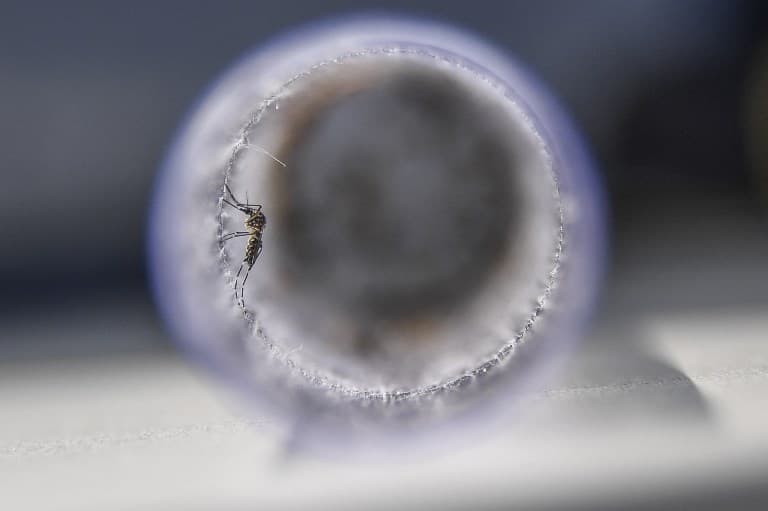Rome suspends blood donations after mosquito-borne chikungunya cases

The city of Rome on Wednesday announced it would carry out a fast-track anti-mosquito campaign after a string of suspected cases of the insect-borne chikungunya virus were detected in the region.
In a statement, city hall said disinfection and other anti-mosquito measures would be carried out "in all urban areas where clinical cases (of chikungunya) have been notified by the local health authorities," known by the initials of ASL.
Italy's top health institute on Wednesday September 13th also announced that all blood donations would be suspended in the south of Rome until further notice. This would affect 1.2 millions donors, reports Rai News.
Blood from other areas of the Lazio region will be quarantined for five days if the donor has visited one of the two municipalities where cases have been confirmed.
Rome's health authorities (ISS) said on Wednesday that the city was proceeding to analyze all specimens of mosquitoes and make the "necessary interventions" in the affected areas, added Rai.
Chikungunya, first identified in Tanzania in 1952, is a painful joint disease transmitted by two species of mosquito.
It causes high fever, nausea, headaches and extreme fatigue, but is generally non-fatal and most patients recover. Its name comes from Swahili for "that which bends up," for it leaves victims stooped.
The viral disease is endemic in Africa and south Asia and has been moving westwards, where it now occurs in Latin America, and north, towards Europe, where the authorities are striving to prevent it from become established.
"The virus is transmitted from human to human by the bites of infected female mosquitoes," according to the World Health Organization. It has been identified in 60 countries.
Seventeen cases of the disease have been recorded in recent days in Italy's Lazio region that includes Rome, including six in the capital itself, according to the regional service for infectious disease surveillance (Seresmi).
Most of the cases have been people who lived, or have stayed, in the Anzio district 50 kilometres (30 miles) from Rome, a cluster which strengthens suspicions that the source was local.
Italian Health Minister Beatrice Lorenzin said that Wednesday's announcement by city hall was too late.
"Too much time has elapsed since the ASL asked for intervention," Lorenzin said. The ASL filed the request on September 7.
The two species that can carry chikungunya are the yellow fever mosquito (Aedes aegypti) and the tiger mosquito (Aedes albopictus). Both are able to carry dengue fever as well as the yellow fever virus.
Ten years ago, more than 200 cases of chikungunya were found in the northeastern Italian region of Emilia Romagna.
READ MORE: Analysis: Why malaria is unlikely to return to Italy
Comments
See Also
In a statement, city hall said disinfection and other anti-mosquito measures would be carried out "in all urban areas where clinical cases (of chikungunya) have been notified by the local health authorities," known by the initials of ASL.
Italy's top health institute on Wednesday September 13th also announced that all blood donations would be suspended in the south of Rome until further notice. This would affect 1.2 millions donors, reports Rai News.
Blood from other areas of the Lazio region will be quarantined for five days if the donor has visited one of the two municipalities where cases have been confirmed.
Rome's health authorities (ISS) said on Wednesday that the city was proceeding to analyze all specimens of mosquitoes and make the "necessary interventions" in the affected areas, added Rai.
Chikungunya, first identified in Tanzania in 1952, is a painful joint disease transmitted by two species of mosquito.
It causes high fever, nausea, headaches and extreme fatigue, but is generally non-fatal and most patients recover. Its name comes from Swahili for "that which bends up," for it leaves victims stooped.
The viral disease is endemic in Africa and south Asia and has been moving westwards, where it now occurs in Latin America, and north, towards Europe, where the authorities are striving to prevent it from become established.
"The virus is transmitted from human to human by the bites of infected female mosquitoes," according to the World Health Organization. It has been identified in 60 countries.
Seventeen cases of the disease have been recorded in recent days in Italy's Lazio region that includes Rome, including six in the capital itself, according to the regional service for infectious disease surveillance (Seresmi).
Most of the cases have been people who lived, or have stayed, in the Anzio district 50 kilometres (30 miles) from Rome, a cluster which strengthens suspicions that the source was local.
Italian Health Minister Beatrice Lorenzin said that Wednesday's announcement by city hall was too late.
"Too much time has elapsed since the ASL asked for intervention," Lorenzin said. The ASL filed the request on September 7.
The two species that can carry chikungunya are the yellow fever mosquito (Aedes aegypti) and the tiger mosquito (Aedes albopictus). Both are able to carry dengue fever as well as the yellow fever virus.
Ten years ago, more than 200 cases of chikungunya were found in the northeastern Italian region of Emilia Romagna.
READ MORE: Analysis: Why malaria is unlikely to return to Italy
Join the conversation in our comments section below. Share your own views and experience and if you have a question or suggestion for our journalists then email us at [email protected].
Please keep comments civil, constructive and on topic – and make sure to read our terms of use before getting involved.
Please log in here to leave a comment.